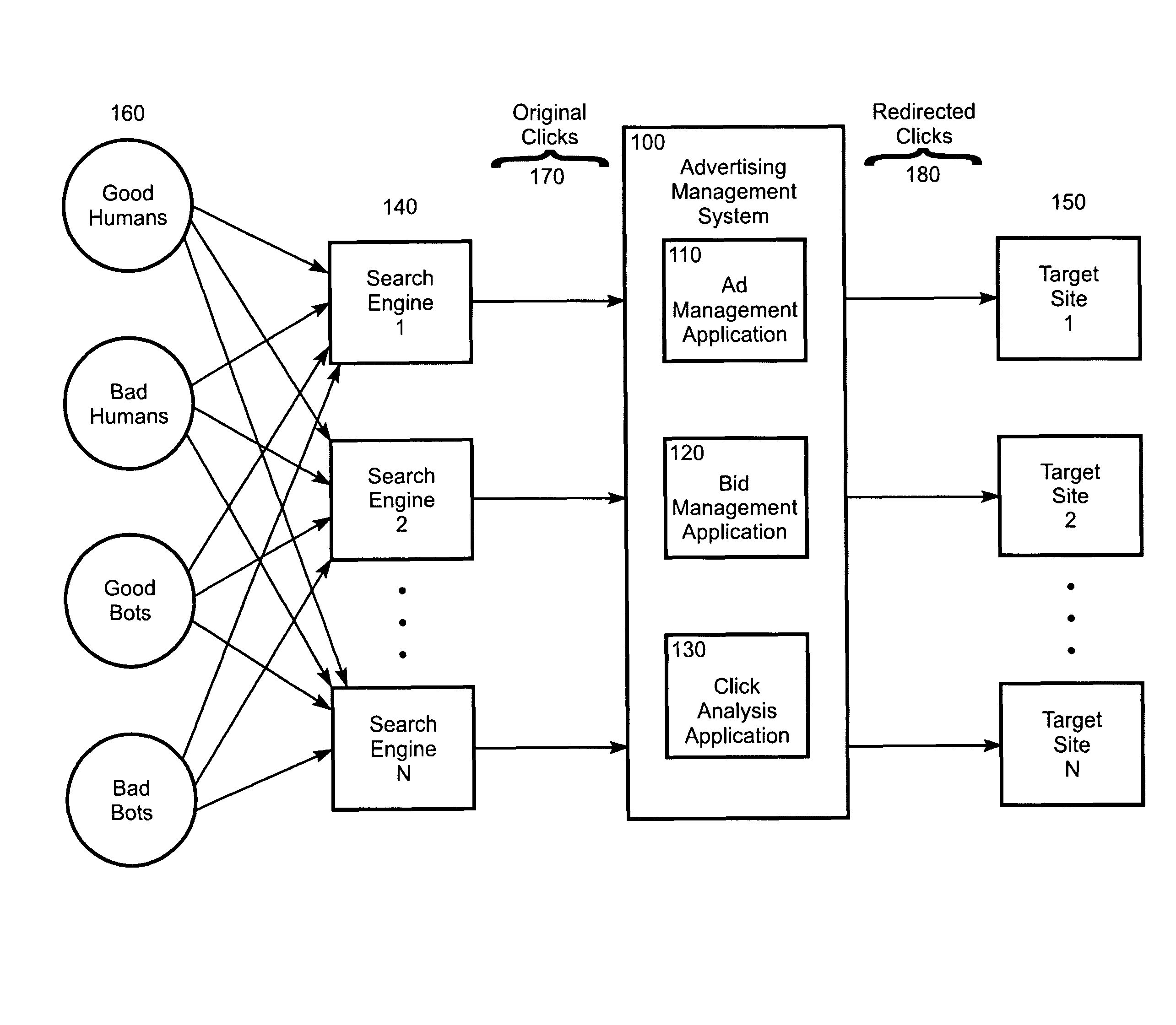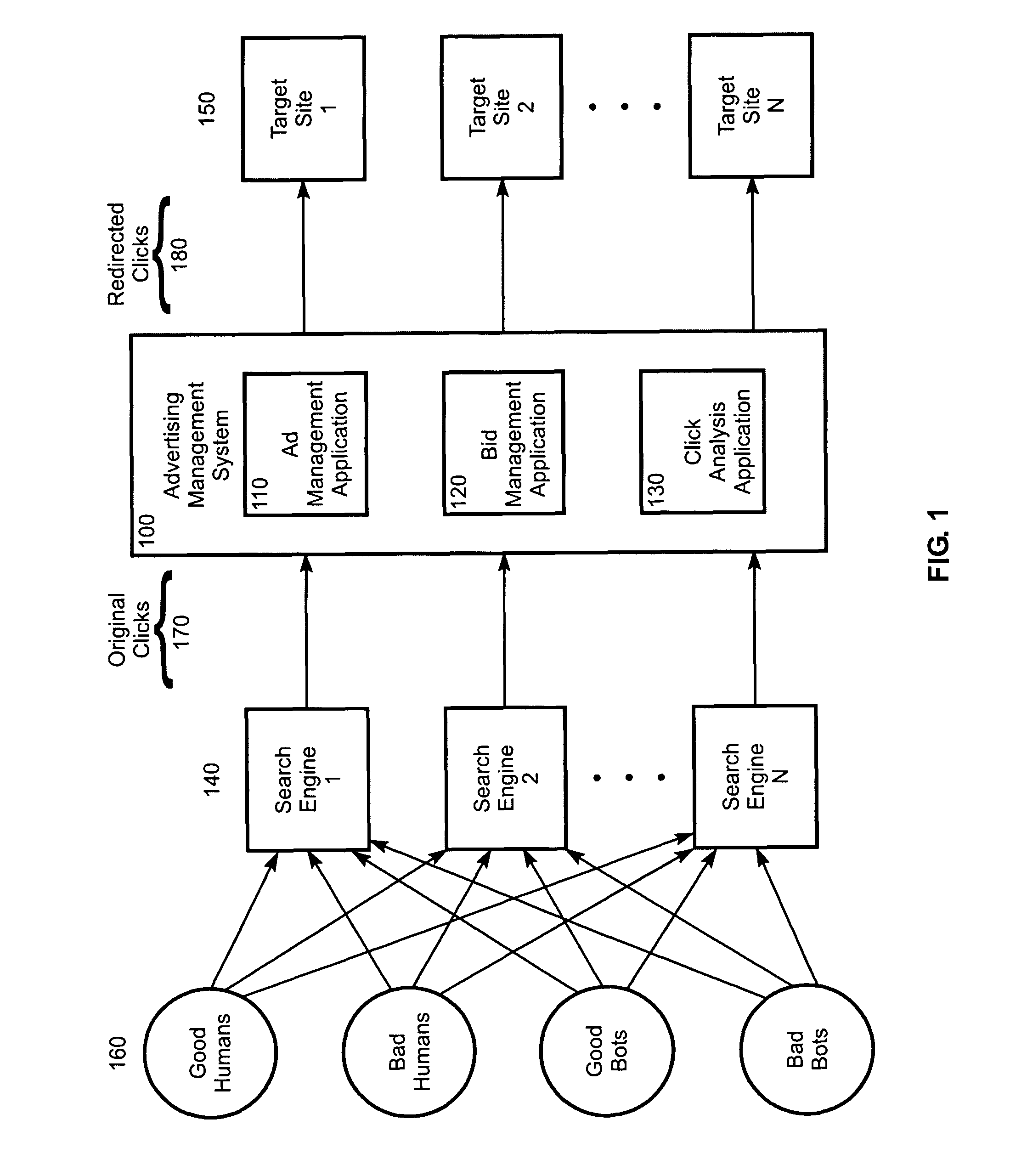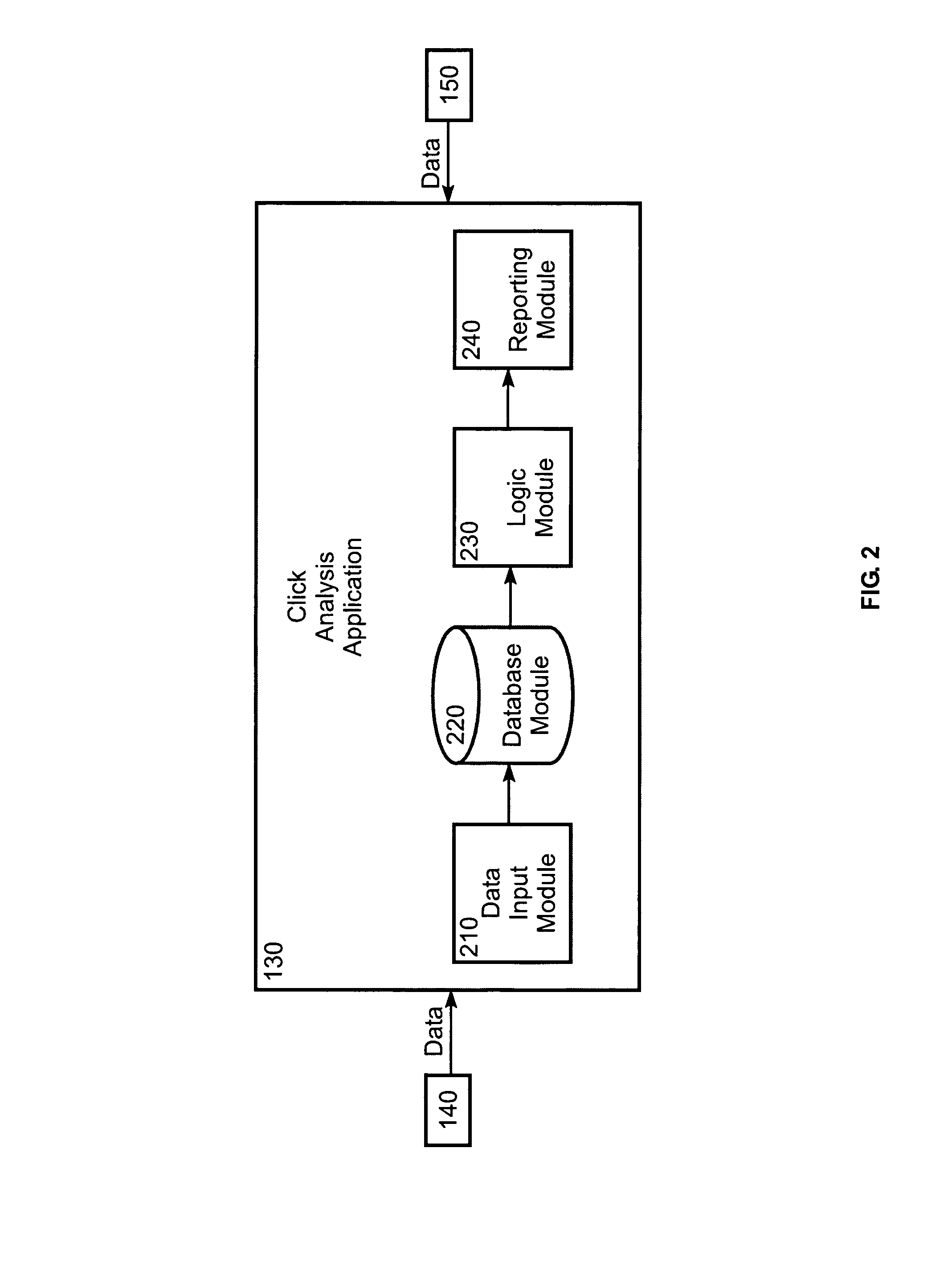Click fraud prevention system and method
a fraud prevention and click fraud technology, applied in the field of electronic fraud detection and prevention, can solve the problems of fraudsters' easy to change their ip address, users can easily defeat the system, and no mechanism provided for managing bids or advertisements across multiple search engines
- Summary
- Abstract
- Description
- Claims
- Application Information
AI Technical Summary
Problems solved by technology
Method used
Image
Examples
Embodiment Construction
[0053]Operation
[0054]In the following detailed description of the invention, reference is made to the accompanying drawings which form a part hereof, and in which are shown, by way of illustration, specific embodiments in which the invention may be practiced. It is to be understood that other embodiments may be used, and structural changes may be made without departing from the scope of the present invention.
[0055]Referring now to FIG. 1. The invention is a system and method for detecting fraudulent clicks of pay-per-click online advertisements. In the preferred embodiment, the click analysis application operates as part of an advertising management system 100 in conjunction with a bid management application 110 and an advertisement management application 120. The advertising management system 100
(a) manages PFP advertisement across multiple search engines via the advertisement management application 110,”
(b) manages PFP keywords and bids across multiple search engines via the bid m...
PUM
 Login to View More
Login to View More Abstract
Description
Claims
Application Information
 Login to View More
Login to View More - R&D
- Intellectual Property
- Life Sciences
- Materials
- Tech Scout
- Unparalleled Data Quality
- Higher Quality Content
- 60% Fewer Hallucinations
Browse by: Latest US Patents, China's latest patents, Technical Efficacy Thesaurus, Application Domain, Technology Topic, Popular Technical Reports.
© 2025 PatSnap. All rights reserved.Legal|Privacy policy|Modern Slavery Act Transparency Statement|Sitemap|About US| Contact US: help@patsnap.com



